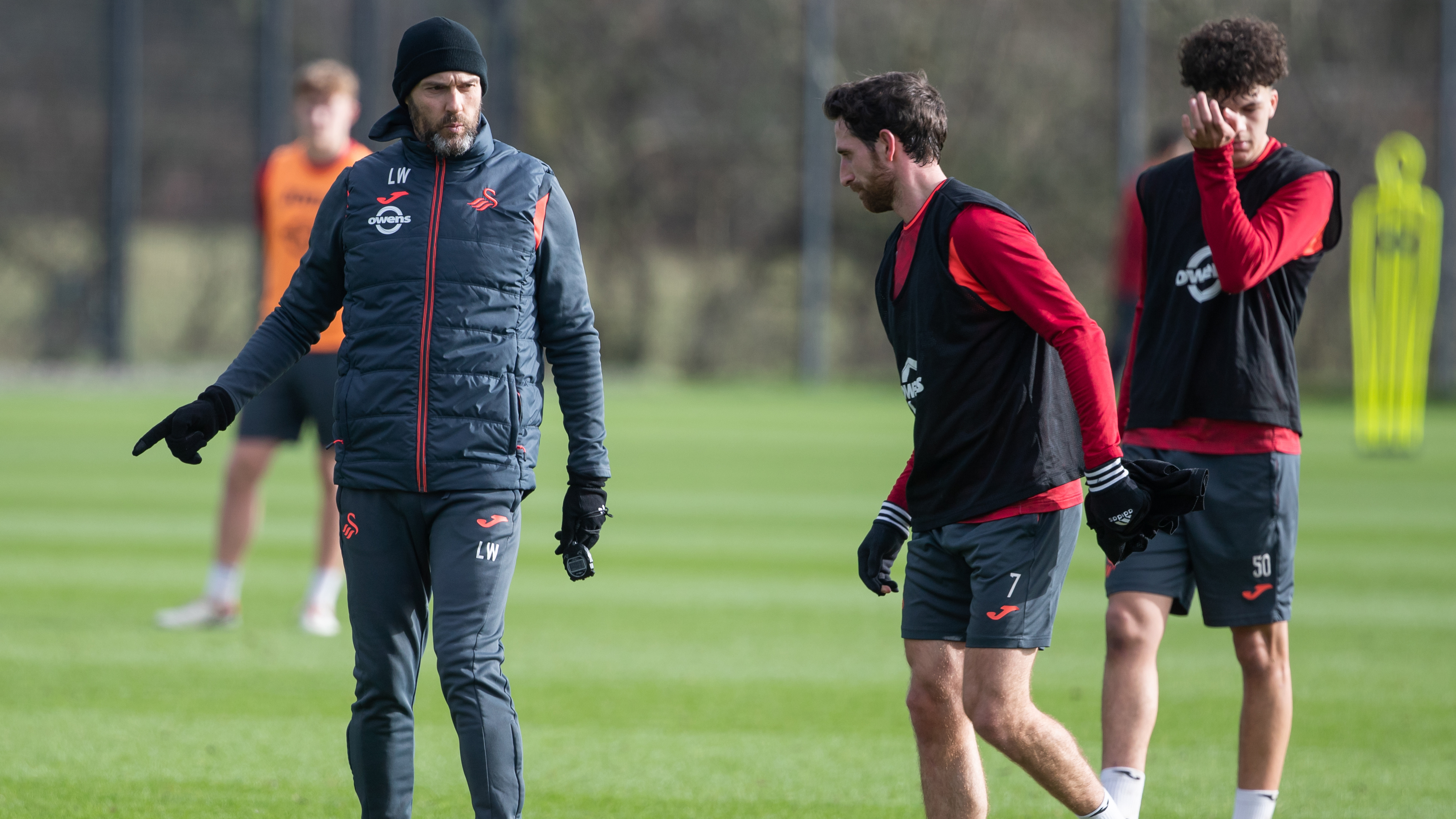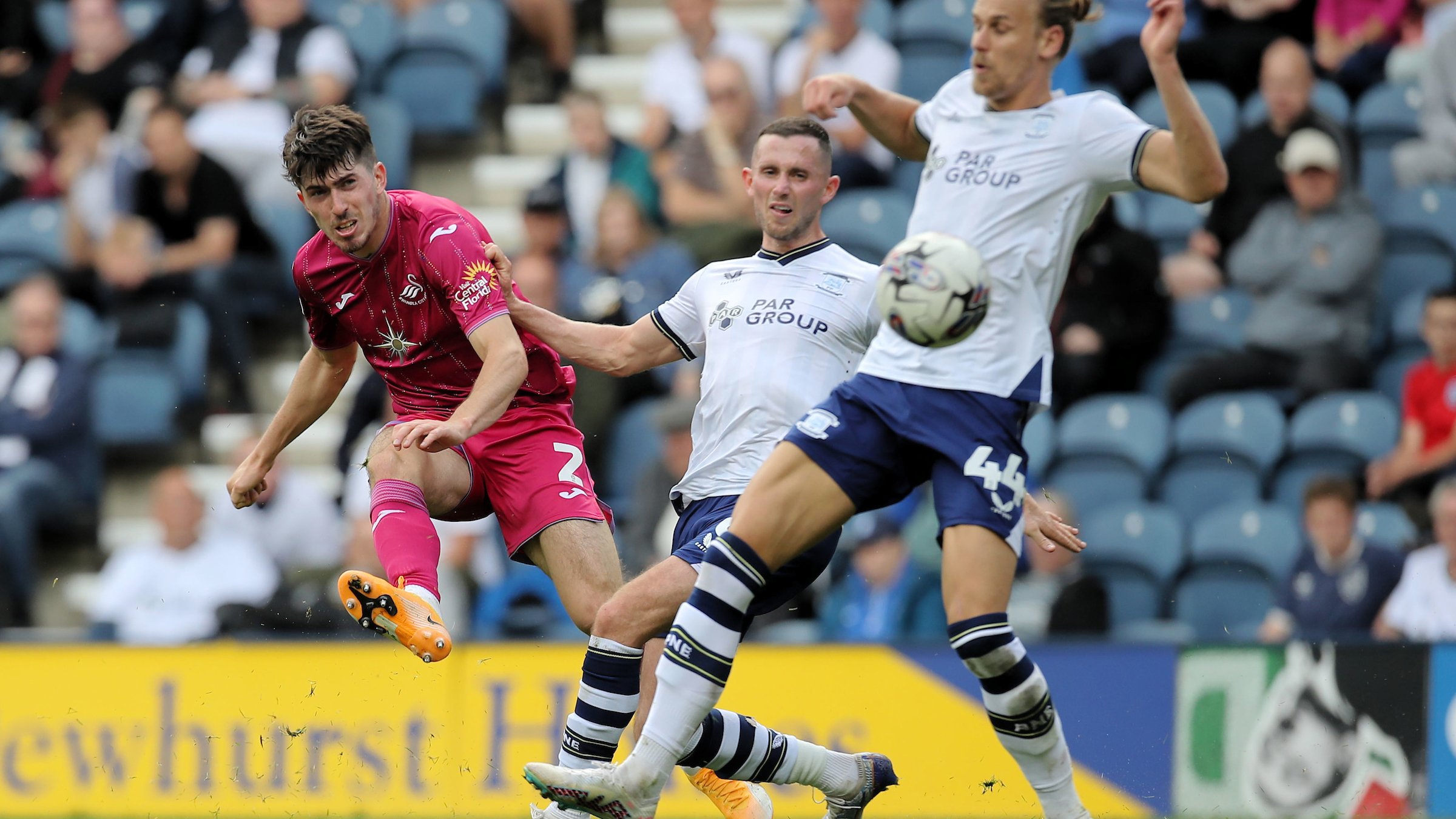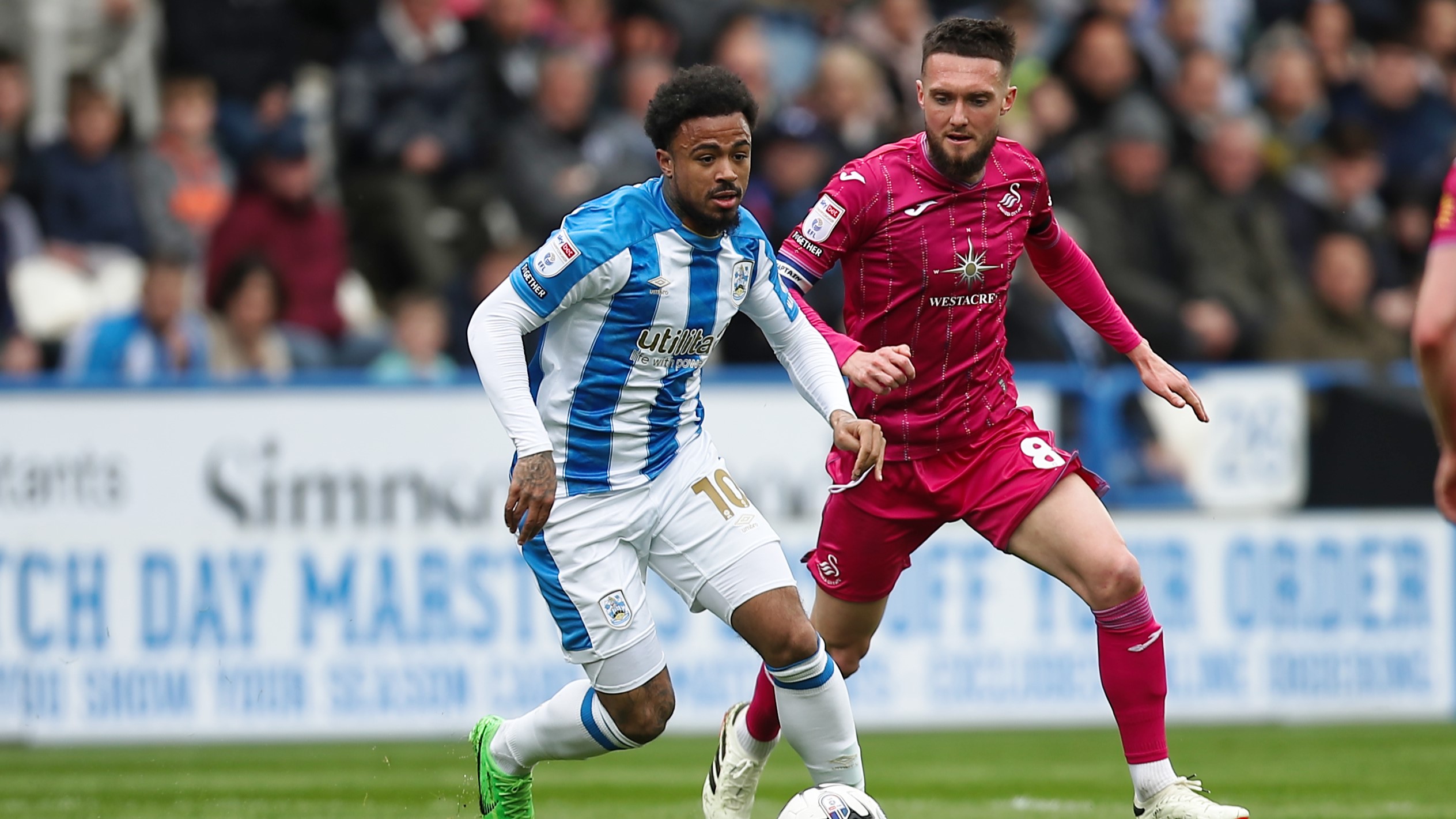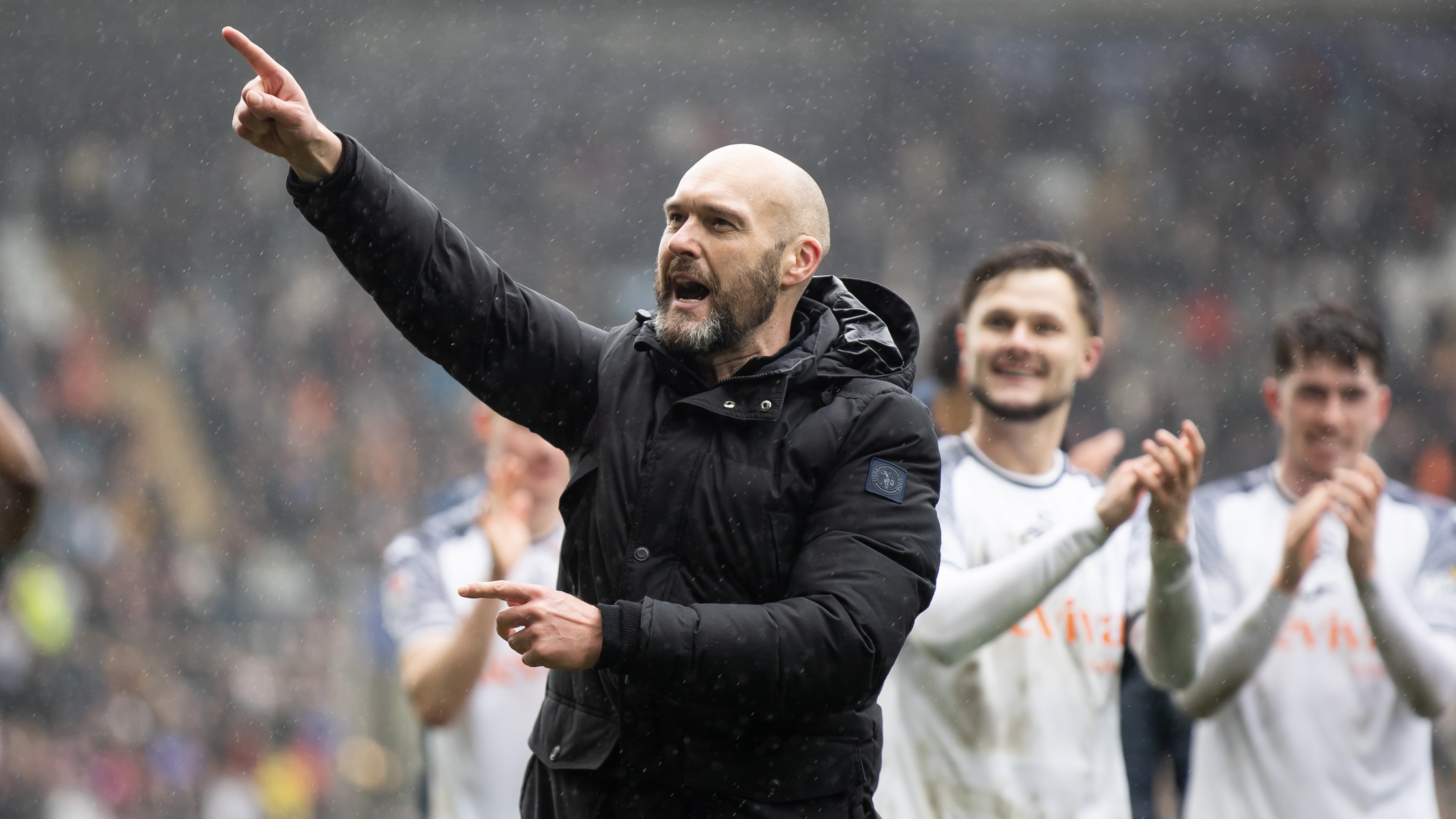Vital Statistics | Swansea City's foundations for the 2024-25 season

Swansea City endured a challenging 2023-24 campaign, but it was one that ended with optimism following an encouraging end to the season for head coach Luke Williams and his squad.
Inevitably there will be change over the months ahead before the 2024-25 season gets under way in earnest, but the foundation stones for how Williams, his staff and players want the team to perform have been laid and are there to be built on.
Swansea finished the season 14th in the Championship, having spent the majority of the campaign in lower mid-table. But their form - and the underlying numbers - during the final quarter of the season point to the possibility of better times ahead.
Here, we take a look at how Swansea developed with and without the ball over the course of the season, and the trends that highlight the team they are looking to become.
In possession

When Williams was appointed head coach on January 5, he set out his vision for the sort of team he wanted to produce in SA1.
“I want to bring goals, a lot of goals, and I have a fairly good track record with that,” he said.
“We need to be mean as well. A one-dimensional team is okay, but a real team is a team that attacks with the same vigour with which they defend.
“It’s going to be a tall order, we have to strive for something fantastic and we begin that task now.”
The former Notts County boss talked about wanting a team that would be on the front foot, with and without the ball, that would be possession-based, but with a desire to be progressive, play with speed and threaten the opposition box.
The initial run of games Williams was presented with following his arrival made that task a particularly tall order, as fixtures against four of the Championship’s top six and an FA Cup clash with Premier League Bournemouth were among his first eight games in charge.
But from the 13 fixtures that followed, Swansea’s attacking metrics were right up there with the best performing sides in the division.
For example, over that period Swansea’s average possession percentage was 61 per cent, the second-highest such figure in the Championship, while they were first for attempted crosses (15.8 per game) and attempted dribbles (16.9 per game); indicating a side comfortable in possession, but willing to ask questions of opponents as often as possible.
In terms of being progressive, the Swans also averaged the third-most passes into the opposition penalty area, with 31.8 per game.
All of that contributed to the sixth-highest xG in the Championship over the final 13 games, and Swansea also had the sixth-highest figure for set-piece shots. From the point of Williams’ appointment, the Swans averaged a league-high 4.50 shots from set-pieces per game, with the head coach praising the work of assistant head coach Alan Sheehan and head of goalkeeping Martyn Margetson have done at dead-ball situations.
Field tilt, an indicator of where on the pitch teams have their possession, was 58 per cent for the same period, showing that the Swans enjoyed a large share of the ball in the opposition half and were able to pin opponents in their own territory.
Swansea City attacking metrics over the final 13 games of the 2023-24 season
Crosses attempted – 15.8 per game (first in the Championship)
Dribbles attempted – 16.9 per game (first in the Championship)
Possession – 61 per cent (second in the Championship)
Passes into box – 31.8 per game (third in the Championship)
Field tilt – 58 per cent (fourth in the Championship)
xG – 1.39 per game (sixth in the Championship)
Set-piece shots – 3.85 per game (sixth in the Championship)
Changes over the course of the season

All of those statistics – while admittedly limited to a 13-game period – are improvements on Swansea’s first 26 games of the Championship campaign prior to the appointments of Williams – plus assistant head coach Ryan Harley and first-team coach analyst George Lawtey in January.
Again, they fall in line with Williams and his players talking about the need to be more aggressive and purposeful.
Among the most striking difference is in XG, where’s Swansea’s predicted figure per game has risen from 1.02 to 1.39 during a little over half of the season prior to January.
Similarly, the shots per game figure climbed to 12.2 from 11.2.
In terms of Swansea’s desire to test defenders, there was a considerable increase in the number of dribbles per game (up from 9.7 to 16.9) and crosses attempted (6.7 to 15.8).
This was part of a greater desire to utilise width, as well as the January signings of Ronald and Przemyslaw Placheta adding pace and athleticism in the final third.
That additional threat in the final third did not come at the expense of Swansea’s status as a possession-based team, however.
Indeed, over the final 13 games of the season, Swansea’s share of possession rose considerably as the ability to stretch defences created more space for ball retention in build-up.
Swansea had averaged 53 per cent of the ball over their opening 26 games, but that rose to 61 per cent over the final run-in, while their number of completed passes per game and percentage of successful completed passes remained broadly the same.
Another area that remained a constant for the Swans was their threat from attacking set-pieces, where the average over the final 13 games (3.85 shots per game) was almost an exact match with the first 26 games.
There is still much work to be done moving forward, and supporters will have heard Swans boss Williams talk about the need for his side to be more accurate and clinical when in advanced areas.
But the underlying statistics suggest a side dominating the ball, but also offering a cutting edge when getting into the final third and asking questions of opposing defences.
They are early signs of that eagerness to be on the front foot and take the game to opponents.
Without the ball

However, when Williams, players and staff have spoken about being a “front foot” team, that was not in relation to what Swansea produce on the ball.
Their work in pressing and harrying to win the ball back has been a key area of focus.
The messaging to the players throughout the duration of last season was that putting their bodies on the line to make blocks and defensive interventions was non-negotiable.
Players have been asked to make sure they attack the ball when opponents have a sight of goal, and anyone turning their back or shying away can expect to find such moments replayed back to them and dissected when a game or session is analysed.
Swansea’s improvement in their pressing work has been clear to see in examples where they have forced mistakes and quickly capitalised on those moments to find the net themselves.
Think of Jamie Paterson’s second goal in the home win over Blackburn Rovers. Matt Grimes spots a negative sideways pass from a free-kick and pounces to win possession, it runs for Paterson who drives forward to fire home left-footed.
Then there’s Ronald’s second in the victory at Sunderland. Joe Allen reads the pass into midfield, jumps ahead of the receiver takes the ball and sweeps a left-footed pass to the Brazilian, who takes a touch and volleys home.
Similarly, in the draw at Norwich, pressing forces a misplaced pass, neat one-touch football gets the Swans moving forward and Liam Cullen finds Paterson in space; the winger does the rest and beats the keeper at the near post.

In that same game, Ben Cabango exhibits the willingness to put his body on the line when first cutting out a threatening cross before quickly regaining his feet to block Borja Sainz’s low effort.
Moments such as those outlined above helped the Swans go through a period of 11 games where they only conceded twice from open play; both those goals coming in defeat to Middlesbrough at the Riverside Stadium.
When it comes to passes allowed per defensive action – a statistic that indicates the intensity of a team’s pressing – Swansea’s figure of just 6.73 for the final 13 games was the best in the Championship, while they were fourth for the most regains of possession in the opposition half.
They allowed the fewest final third entries of any team in the second tier while they conceded the second-fewest number of goals during that time.
Swansea City defensive metrics over the final 13 games of the 2023-24 season
Final third entries conceded – 30.5 per game (fewest in the Championship)
Passes per defensive action – 6.73 per action (fewest in the Championship)
Goals conceded – 0.85 per game (second lowest in the Championship)
Regains in the opposition half – 30.2 per game (fourth lowest in the Championship)
xG conceded – 1.06 per game (seventh lowest in the Championship)
Counterpressures – 31.8 per game – (seventh lowest in the Championship)
Passes into box conceded – 24.5 per game (seventh lowest in the Championship)
Development from earlier in the season

As with the attacking stats, these defensive metrics highlight the progress Swansea made over the final months of the season.
The clearest example of those improvements is related to their pressing work. That figure for passes per defensive action we mentioned earlier (6.73) has risen by a startling amount, with Swansea’s preference to sit off sides over the opening five months of the season meaning that figure was up at 11.61 at the start of January.
Counterpressures – the use of multiple players attempting to win back possession in the immediate aftermath of losing the ball – rose from 29.7 per game to 31.8.
Pressure regains – the number of times a team won the ball back within five seconds of a player pressuring an opponent – rose from 24.58 per game to 26.66 per game.
Furthermore, the amount of successful passes Swansea allowed fell by an average of almost 60 per game over the final 13 games (314) compared to the first 26 (375).
That last statistic highlights both sides of Swansea’s game. They have pressed more effectively, but this has also led to them having a higher share of the ball, allowing them to further limit the opportunities for sides to hurt them.
That also feeds into the field tilt figure we mentioned earlier; better pressing higher up the field saw Swansea win the ball in more advanced areas and be able to enjoy more of the ball in opposition territory. Combine those figures and you get the clearest picture of what Swansea are striving to be.
Taking a more aggressive approach without the ball clearly carried a significant challenge, particularly when Swansea were facing the likes of Leeds United and Leicester City early in Williams’ reign.
But it was a decision taken in the knowledge that the only way to learn was by being carrying out those instructions under duress in match conditions, and that going through difficulties and learning along the way would stand the team in good stead for the challenges ahead over the remainder of the season. That proved to be the case.
Ultimately, these factors contributed to the Swans enjoying the fourth-best goal difference in the Championship over the final run-in, and that figure could easily have been greater but for a sequence where concession of goals from set-pieces undermined the progress being made in open play.
Conclusion

Of course, when reading through all these facts and figures it can be easy to overlook the one statistic we all look for at the end of every match; the scoreline.
The final outcome is the one we all focus on because, as the cliché goes, points win prizes and winning games is what puts those priceless commodities on the board.
But, underlying trends, such as those outlined above, are important. No side is going to go through a campaign without suffering defeats, without experiencing setbacks, without there being periods of adversity. You need only look at the difficult run-ins some of the promotion contenders endured to see that.
In times good or bad, it’s those underlying figures that can confirm or disprove the direction a side is heading in, or even where that team should be.
The message for Williams and his staff to the players during this off-season will be that everything is there to suggest they are capable of being in the higher reaches of the table, because the indicators that show whether they are performing in a manner that fits the club and the team’s identity are at a high level.
That’s before you consider the fact that the alteration in playing style had to be gradually implemented while the season was ongoing; the potential benefits of a full pre-season for coaches and players alike should not be underestimated.
There will be change this summer, inevitably, as there will be at clubs up and down the country, but the belief should be there that Swansea have the chance to approach the 2024-25 campaign with belief they are heading in the right direction.